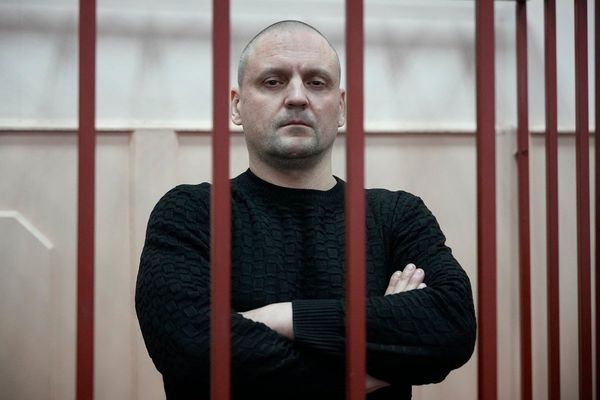Hair loss affects approximately 40% of men and 25% of women in the United Kingdom, impacting confidence and self-image for millions. While numerous treatments promise results, PRP (Platelet-Rich Plasma) therapy has emerged as an innovative, natural solution that harnesses your body's own healing capabilities. This advanced treatment is gaining significant popularity in London, offering hope to those experiencing hair thinning and loss. In this comprehensive guide, we'll explore everything you need to know about PRP hair treatment, how it works, what results you can expect, and how to choose a quality clinic in London for your treatment journey.
What is PRP Hair Treatment?
PRP hair treatment utilizes Platelet-Rich Plasma, a concentrated portion of your own blood that contains powerful growth factors capable of stimulating tissue regeneration and cellular repair. Platelets are blood cells that play a crucial role in healing wounds and promoting new cell growth. When concentrated and injected into the scalp, these platelets release growth factors including:
- Platelet-Derived Growth Factor (PDGF)- Stimulates cell replication and growth
- Vascular Endothelial Growth Factor (VEGF)- Promotes blood vessel formation
- Transforming Growth Factor (TGF)- Regulates cell growth and differentiation
These growth factors work synergistically to stimulate dormant hair follicles, improve blood circulation to the scalp, and encourage the production of collagen and new tissue. What makes PRP particularly appealing is its autologous nature—meaning the treatment uses your own blood, eliminating the risk of allergic reactions or rejection that can occur with foreign substances.
Originally developed for use in orthopedic surgery and sports medicine to accelerate healing, PRP therapy has been successfully adapted for hair restoration over the past decade. The scientific foundation behind PRP is solid: by concentrating platelets to levels 3-5 times higher than normal blood, the treatment creates an optimal environment for hair follicle regeneration and strengthening. You can learn more about the science and process of PRP hair treatment here.
How Does PRP Treatment Work for Hair Loss?
Understanding the PRP procedure helps demystify the treatment and set realistic expectations. The process is relatively straightforward and typically takes between 60 to 90 minutes per session.
Step 1: Blood Collection
The process begins with a simple blood draw, similar to routine blood tests. Typically, 20-60ml of blood is collected from your arm, depending on the treatment area and protocol.
Step 2: Centrifugation
Your blood sample is placed in a medical-grade centrifuge, which spins at high speeds to separate the different blood components by density. This process isolates the platelet-rich plasma from red blood cells and platelet-poor plasma, creating a concentrated solution rich in growth factors.
Step 3: Scalp Preparation
While the blood is being processed, your scalp is cleansed and prepared for treatment. A local anesthetic may be applied to minimize discomfort, though many patients find the injections tolerable without it.
Step 4: PRP Injection
The concentrated PRP is carefully injected into the areas of your scalp experiencing hair loss or thinning. Multiple small injections are made at specific depths to ensure the growth factors reach the hair follicles effectively.
Treatment Protocol:
- Initial series: 3-4 sessionsspaced 4-6 weeks apart
- Maintenance: Every 6-12 monthsto sustain results
- Recovery time: Minimal- most patients resume normal activities immediately
- Side effects: Mild tenderness or redness for 1-2 days
Benefits and Expected Results of PRP Hair Treatment
PRP therapy offers several compelling advantages for those struggling with hair loss. The primary benefits include:
- Reduced hair shedding- Noticeable decrease in daily hair loss
- Improved hair density- Thicker coverage in thinning areas
- Enhanced hair quality- Increased thickness, strength, and shine
- Stronger existing hair- Better overall hair health and resilience
- Natural and safe- Uses your own blood, minimizing risks
However, it's essential to maintain realistic expectations about the timeline. Hair growth is a gradual process, and PRP works by encouraging your body's natural regeneration mechanisms.
Results Timeline:
- 3-4 months: Initial improvements become noticeable
- 6-12 months: Optimal results appear after completing initial treatment series
- Success rate: Effective for 60-80% of patientswith early to moderate hair loss
Clinical studies suggest that PRP works best for individuals experiencing:
- Early-stage hair thinning
- Androgenetic alopecia (pattern baldness)
- Areas with functioning but miniaturized hair follicles
Who Benefits Most from PRP:
- Patients with early to moderate hair loss
- Those seeking non-surgical options
- Individuals looking to enhance other treatments
- People wanting natural, autologous solutions
PRP can be combined with medications like minoxidil or finasteride, or used alongside hair transplant procedures to improve graft survival and accelerate healing.
Choosing a Clinic for PRP Hair Treatment in London
Selecting the right clinic for your PRP hair treatment in London is crucial for both safety and effectiveness. Not all PRP treatments are created equal, and the quality of your results depends heavily on the expertise of your practitioner and the protocols they follow.
Key Criteria for Choosing a Quality Clinic:
- Medical qualifications- Ensure practitioners are experienced doctors with specialized training in trichology or hair restoration
- Expertise in hair biology- Look for professionals who can accurately diagnose your specific type of hair loss
- Quality equipment- Medical-grade centrifuges produce more consistent platelet concentrations
- Comprehensive consultations- Thorough assessment of your hair loss pattern and medical history
- Personalized treatment plans- Each patient's needs vary and require customized approaches
- Strict hygiene protocols- Proper safety measures for blood handling and injections
A reputable clinic should offer initial consultations where your hair loss is thoroughly assessed and realistic treatment expectations are discussed. For those seeking specialized care, clinics in London with experienced practitioners understand the nuances of hair restoration and can provide expert guidance.
Important Questions to Ask During Your Consultation:
- How many PRP treatments has the practitioner performed?
- What concentration protocols do they use?
- Can they provide before-and-after photographs of previous patients?
- What is their recommended treatment plan and maintenance schedule?
- What are the total costs, including maintenance sessions?
- What safety and sterilization protocols do they follow?
A quality clinic will be transparent about costs, provide detailed information about their procedures, and never make unrealistic promises about results. They should also maintain clean, professional environments that adhere to strict medical standards.
Conclusion
PRP hair treatment represents a scientifically grounded, natural approach to addressing hair loss by leveraging your body's own regenerative capabilities. With proper treatment from qualified practitioners, many patients experience significant improvements in hair density, quality, and reduced shedding. While results require patience and realistic expectations, the minimally invasive nature and safety profile of PRP make it an attractive option for those exploring hair restoration solutions in London. If you're experiencing hair loss, consulting with a specialized practitioner can help you determine whether PRP therapy is right for your specific situation and goals. The advances in hair restoration treatments available today offer genuine hope for those seeking to regain their confidence and fuller hair.







